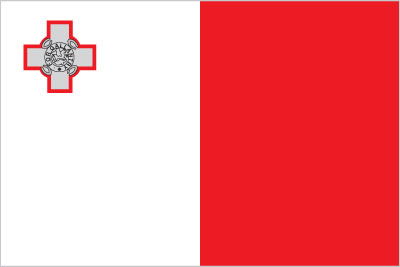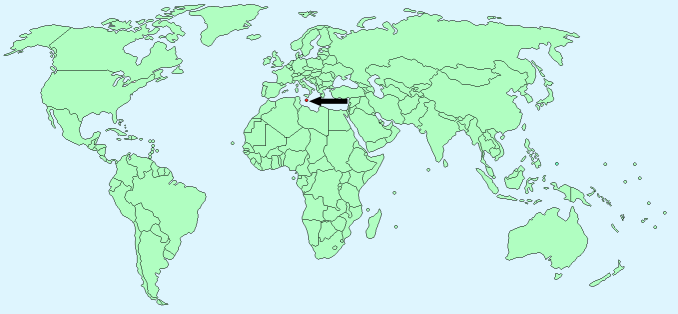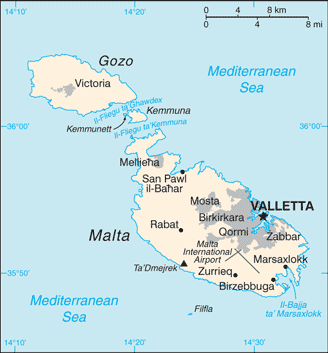Malta


Continent – Europe
Region – Mediterranean
Size – 316 km²
Geography – collection of rocky islands with plains
Language – Maltese (official), English (official)
Religion – Roman Catholic (90%+)
Monetary Unit – Euro
Natural Resources – limestone, salt, arable land
Agriculture – potatoes, cauliflower, grapes, wheat, barley, tomatoes, citrus, cut flowers, green peppers; pork, milk, poultry, eggs
Industry – tourism, electronics, ship building and repair, construction, food and beverages, pharmaceuticals, footwear, clothing, tobacco, aviation services, financial services, information technology services

Neighbouring Countries – None
Population – 412,655 (2014 estimate)
Population Growth Rate – 0.33%
Average Life Expectancy – 80.11
Capital City – Valletta (197,000)
Highest Mountain – Ta’Dmejre (253 m)
Longest River – None
Climate – mediterranean – warm winters 10°C – 17°C. hot summers 20°C – 27°C
Yearly Rainfall – 60 cm (approx) mostly September to February
Plant Life – carob, fig, grape, bay, and olive
Animal Life – weasel, hedgehog, bat, turtles, tortoises, lizards
Bird Life – sea birds, heron, bunting, thrush, chaffinch, linnet, snipe, house martin, kite, hobby, falcon, wagtail, kestrel, buzzard
Fish Life – Porpoises, dolphins, sea fish
Harvard Reference for this page:
Heather Y Wheeler. (2015). Malta. Available: https://www.naturalhistoryonthenet.com/Facts_Figures/Country_Facts/malta.htm. Last accessed Tuesday, July 19, 2016
Facts and Figures Pages
